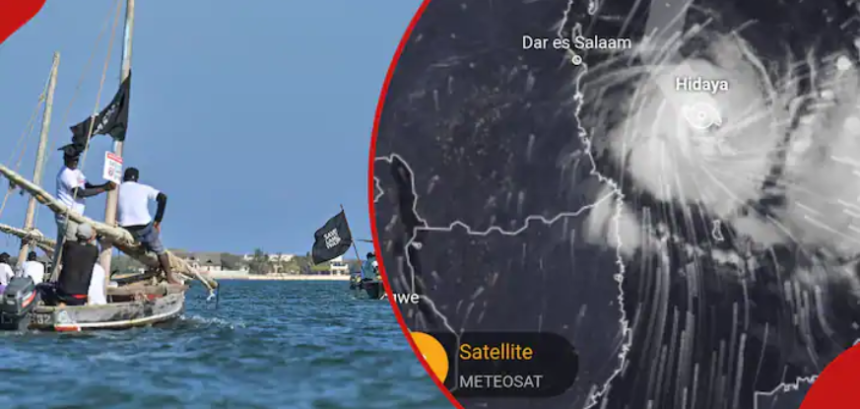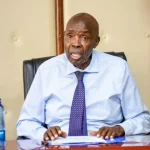While Kenyans are coping with the aftermath of flooding, a cyclone near coastal Kenya is being warned about by the weatherman. Cyclone Hidaya, which originated in the Comoros Islands, is expected to affect portions of Mombasa and regions near the coastline, according to the weatherman. In a report to the Cabinet, the meteorologist predicted that the powerful waves would cause the intensity of the rainfall to quadruple.
What is Cyclone Hidaya?
According to the department, Cyclone Hidaya, which has already affected portions of the Comoros Islands, is to blame for the powerful waves that will be expected to impact Mombasa. Cyclone Hidaya is a moderate tropical cyclone presently passing across the Indian Ocean, according to the IGAD Climate Prediction and Applications Centre (ICPAC). Peak speeds of 165 kph and quadruple the intensity of the rainfall are predicted.
🌀 Tropical Cyclone #Hidaya update!
🚨 The storm is currently at a severe level of warning, with maximum significant wave height reaching 7.9 meters (26 feet), and is forecast to make landfall tomorrow.
It is predicted to intensify to a peak intensity of 165 km/h (90 knots) in… https://t.co/r5PvKKEUgg pic.twitter.com/h7qzunbhC4
— ICPAC (@icpac_igad) May 3, 2024
Will Kenya see more rain as a result of Cyclone Hidaya?
The intensity of the rainfall is predicted to quadruple due to the cyclone. From now until Sunday, May 5, the Rift Valley, Nairobi, the Western and Eastern Rift Valleys, and the vicinity of Lake Victoria will all see severe weather.
Residents are alerted to the possibility of sporadic flash floods as 42 counties throughout the country are predicted to experience heavy rainfall.
Additionally, the weatherman is warning that visibility will be severely hampered in several regions due to heavy fog. The president, the Cabinet, the Ministry of Environment, the Kenya Forest Service, departments in charge of disaster management, and other pertinent authorities are informed of the concerning news by the department.
According to Daily Nation, the Cabinet is informed that the average to heavy rainfall that has been occurring in some areas of the nation for the past three months will persist when they convened for a second meeting in as many weeks. The brief to the Cabinet stated that in low-lying areas, the prolonged rains could cause landslides, mudslides, and flash floods. President William Ruto issued an order to move Kenyans residing in low-lying and riparian areas to higher and safer terrain based on this development.
Climate change is linked to Kenya’s excessive rainfall.
There’s still no guarantee that schools will reopen on Monday, May 6, since thousands of displaced families are still being housed in some of the educational facilities that are submerged by water. The Cabinet affirmed that climate change is causing intense and harsh weather, and they committed to giving policies that support the reduction of negative effects top priority.
The environmental advocacy group Greenpeace Africa recently accused large consumers of fossil fuels of being responsible for the losses and damage caused by the extreme weather and pointed the finger at climate change.
“The science is clear that these extreme weather events are a direct consequence of our continued reliance on fossil fuels, wreaking havoc on vulnerable communities across the globe. Fossil fuel companies should be held accountable and contribute their fair share to addressing the climate crisis,” Dr Oulie Keita, Greenpeace Africa’s Executive Director said.
This occurs when official government records show that the number of people killed by floods in Kenya is getting close to 200.



